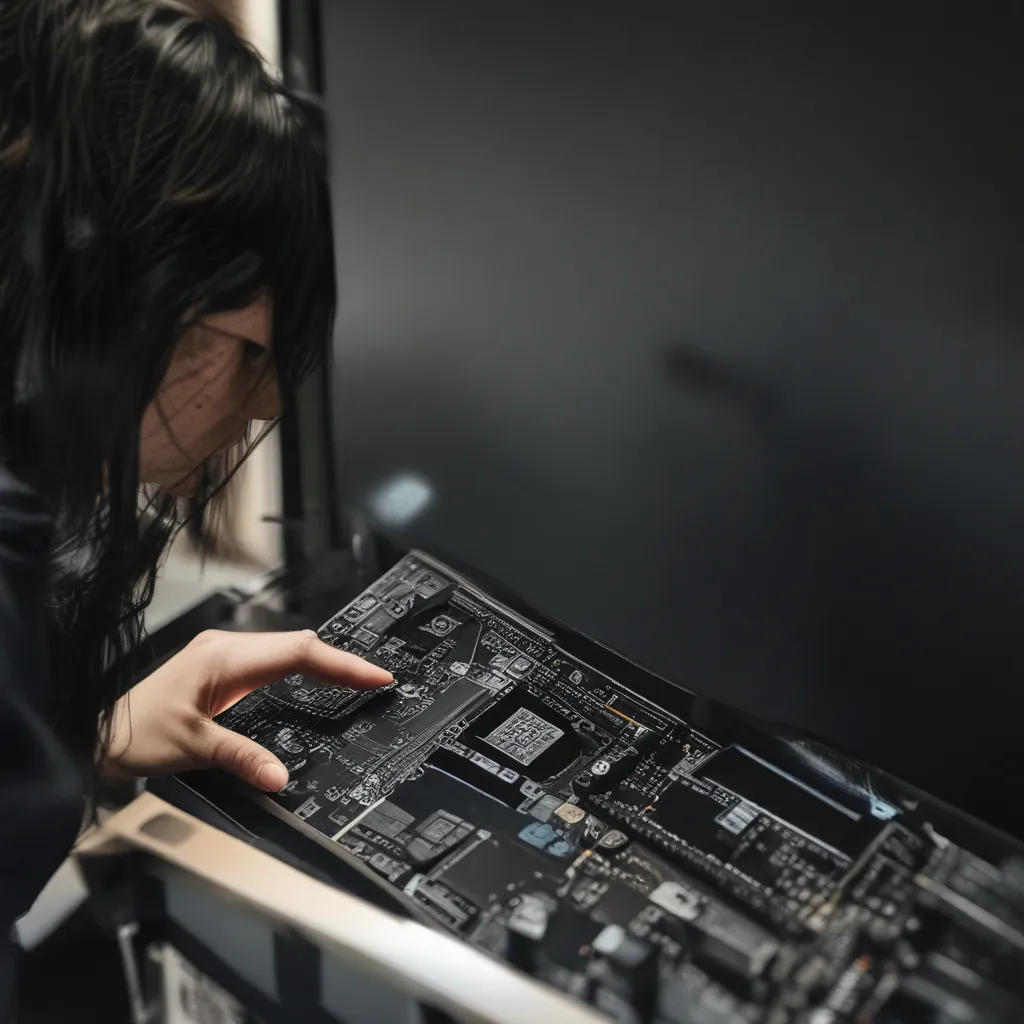
Staring into the Abyss: A Tale of the Black Screen of Death
It was a dark and stormy night (okay, maybe not that dramatic, but bear with me) when it happened. I was merrily typing away on my trusty Windows 10 laptop, lost in a sea of code, when suddenly, the screen went black. Not the kind of black where you can still see the faint glow of the monitor, but the kind that feels like you’ve been transported into the void of space, with no sense of up or down, left or right.
Panic set in immediately. Had my beloved machine finally succumbed to the dreaded Black Screen of Death (BSOD)? Was this the end of my productivity, my entertainment, my digital life as I knew it? I frantically pressed every key on the keyboard, hoping for a miracle, but alas, nothing happened. The screen remained resolutely black, mocking my feeble attempts at resurrection.
As a self-proclaimed tech enthusiast and part-time IT support for my friends and family, I knew I had to take action. This was not the time to succumb to the darkness – it was time to face the challenge head-on and conquer the BSOD once and for all. After all, I had the knowledge and the determination to get my machine back on its feet, no matter what it took.
Diagnosing the Mysterious Black Screen
The first step in my quest to vanquish the BSOD was to understand the root cause of the issue. Was it a hardware problem, a software glitch, or something more sinister lurking in the depths of my operating system? I turned to the trusty internet, scouring forums and tech support articles for clues.
One particularly helpful article from Microsoft’s support forums highlighted a few common causes of the Black Screen of Death, including outdated drivers, corrupted system files, and even malware infections. Armed with this knowledge, I began my investigation, methodically troubleshooting each potential culprit.
First, I tried the simple solutions – rebooting the machine, checking the power connections, and ensuring that the display was properly connected. When those didn’t work, I delved deeper, using keyboard shortcuts like “Windows key + P” and “Ctrl + Alt + Del” to try and reset the graphics system or access the task manager. It was like a high-stakes game of whack-a-mole, with the black screen popping up at random intervals, taunting my efforts.
Tackling the BSOD Step by Step
As I continued my struggle against the relentless black screen, I stumbled upon another helpful resource, this article from AVG. It provided a more comprehensive guide to troubleshooting the BSOD, covering everything from disabling startup apps to performing a system restore.
Determined to leave no stone unturned, I methodically worked through each suggested solution, like a detective piecing together a complex puzzle. I disabled unnecessary startup applications, hoping to free up resources and optimize the boot process. When that didn’t work, I tried a hard reset, holding down the power button for a solid 10-15 seconds to force a reboot.
At this point, I was starting to feel like a tech superhero, armed with an arsenal of knowledge and problem-solving skills. But the BSOD was proving to be a worthy adversary, stubbornly refusing to surrender. It was time to pull out the big guns – the system restore tools.
Restoring the System to Its Former Glory
Ransacking the Microsoft support forums once more, I learned about the various system recovery options available in Windows 10 and 11. With a deep breath and a steely determination, I navigated the menus, carefully selecting the right recovery options to restore my system to a previous, working state.
The process was not without its challenges – I had to boot into safe mode, navigate through the recovery tools, and pray that the system would cooperate. But with each step, I could feel the weight of the black screen lifting, like a curtain slowly being drawn back to reveal the light.
And then, like a phoenix rising from the ashes, my trusty laptop rebooted, the familiar Windows login screen greeting me with a sense of relief and triumph. I had done it! I had conquered the Black Screen of Death, restoring my machine to its former glory.
Preventing the Scourge of the Black Screen
As I sat back and admired my handiwork, I realized that the battle against the BSOD was not just a one-time affair. It was an ongoing struggle that required vigilance and proactive measures to ensure it never reared its ugly head again.
That’s why I’ve made it my mission to share my hard-earned knowledge with others, to help them navigate the treacherous waters of the black screen and keep their machines running smoothly. And one of the best tools I’ve found for the job is ITFix, a computer repair service in the UK that specializes in tackling the Black Screen of Death and other tech woes.
With their expert technicians and cutting-edge diagnostic tools, ITFix can help you identify the root cause of your black screen issues and implement the appropriate solutions, whether it’s a driver update, a system restore, or even a hardware replacement. And the best part? They offer a range of services to keep your machine in tip-top shape, from tune-up software to regular maintenance, so you never have to worry about the dreaded BSOD ever again.
So, if you’re currently staring into the abyss of the Black Screen of Death, take heart – you’re not alone, and there are solutions out there. And with the right tools and a little bit of tech-savvy know-how, you too can vanquish the darkness and restore your digital kingdom to its former glory.












